INTERSKI TV: Day 3 Re-Cap
Mastering Swiss “Harry”
Yesterday Switzerland presented indoor lecture with the topic of “Stop thinking, Start learning” This topic was based on Swiss methodology of skill development. Presentation was done by Isa, she is in charge of educational committee on Swiss Snow School Snowboard division. Similar to CASI, they emphasize on delivering lesson customized to customer’s needs in order to give the best learning experience. For instructors, they develop several points and tools to structure high quality and fun lessons in the simplest way possible.
Three models are introduced:
1st level – Acquisition/ Consolidation
2nd level – Application/ Variation
3rd level – Creation/ Supplementation
We also discussed in groups to list some key points to simplify lessons, such as small steps, good demo, analogy, simple and clear explanation etc.
Today’s on snow presentation was based on indoor presentation. Breen and I were in the group of Philipp, a technical director from Davos snow school.
At the start of the presentation, Philipp mentioned two goals:
1: Learn to do trick called “Harry” ( nose press with backside shifty)
2: Introducing Swiss methodology of skill development.
The first goal is a technical goal and the second goal is a pedagogical goal.
Philipp started just showing clear demo and made us try with mileage. At this stage his intention was to make us learn basic form of this trick “harry” just by copying his demo. Then at the top of the lift on the flat area, he made us do static “harry” without board first, then with board assisted by someone. Then we went down to apply this moment on the easy terrain to start, kept practicing with mileage. This first step is Acquisition and consolidation.
Next, Philipp added three analogies to help us perform “harry ” better.
1: Superman – lean forward to the direction of the travel
2: Kick boxer – back foot heel kick movement
3: Frisbee throw (with front hand) – helping body to move forward
Also he added another hint, making us feel pressure on big toe on front foot, pressure on heel on back foot.
This second step is Application and Variation
Lastly he paired us up and perform “harry” following each other. This gave us an opportunity to copy each other’s movement and learn the timing of performing “harry”. After this we headed to terrain park to try “harry” on the rollers of the jumps. This allowed us to adapt timing with more speed and perform more stylish “harry” . He also gave us last hint which is the extension of hip, knee and ankle joints when performing “harry”
This third step is Creation and Supplementation.
Overall it was a fun session, well-prepared, maximized terrain available. We were challenged, moving, cheering, laughing, falling. It is always interesting to see the different approaches to similar materials we use in the CASI system. Philipp was focusing on presenting clear structures of the Swiss methodology of skill development and it was definitely clearly delivered. I wished we had more group or personalized feedbacks to achieve our technical goal more efficiently, even if we were using guided discovery approach.
It is always fun to learn new things!
By the way we decided to name #swissharry for this trick. Don’t forget to use this in your photos!
Yuki
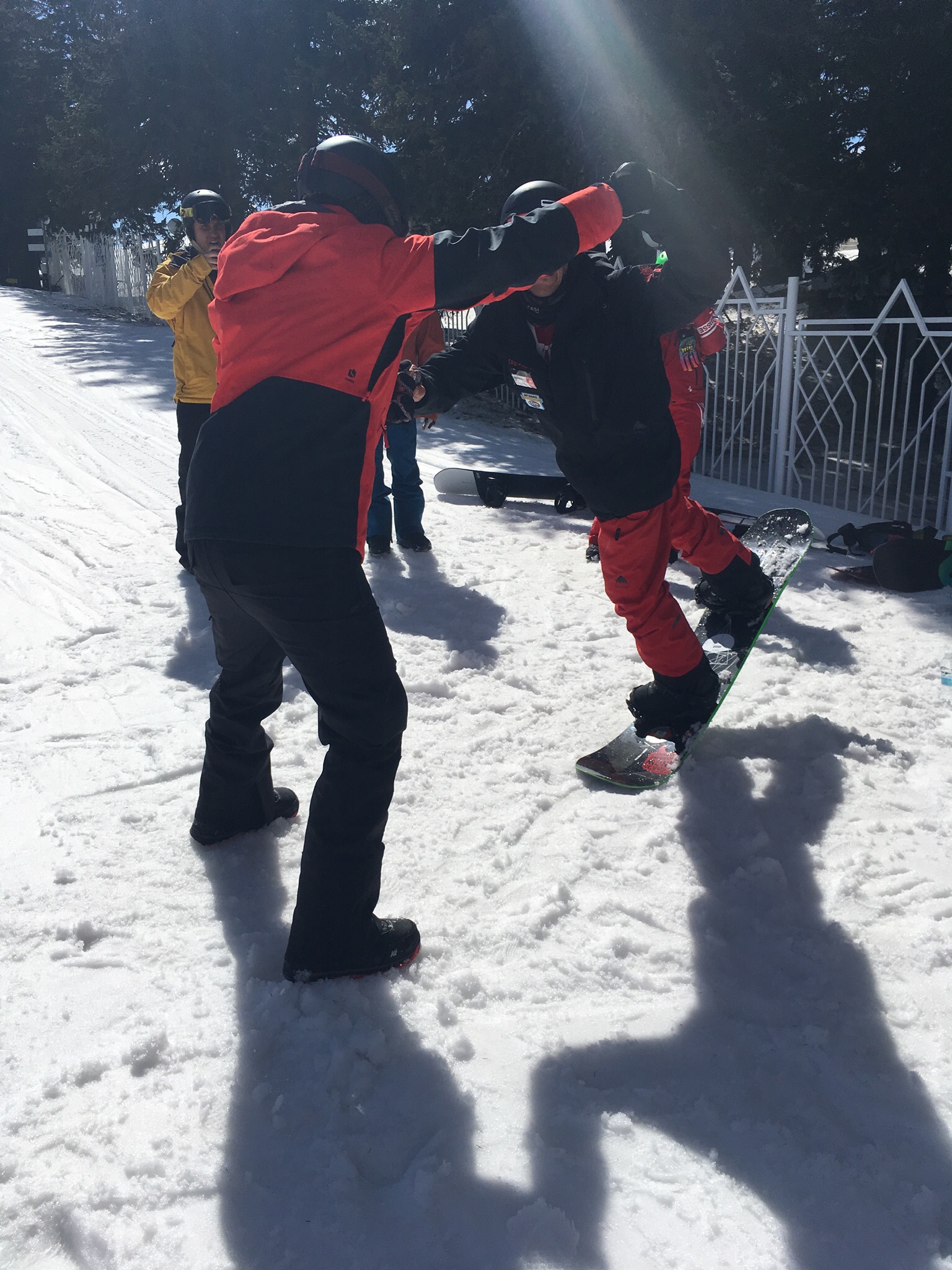
Sweden – Customized Snowboard Technique
Similar to CASI, Snowsport Sweden aims to give their instructors a framework within which to build their lessons.
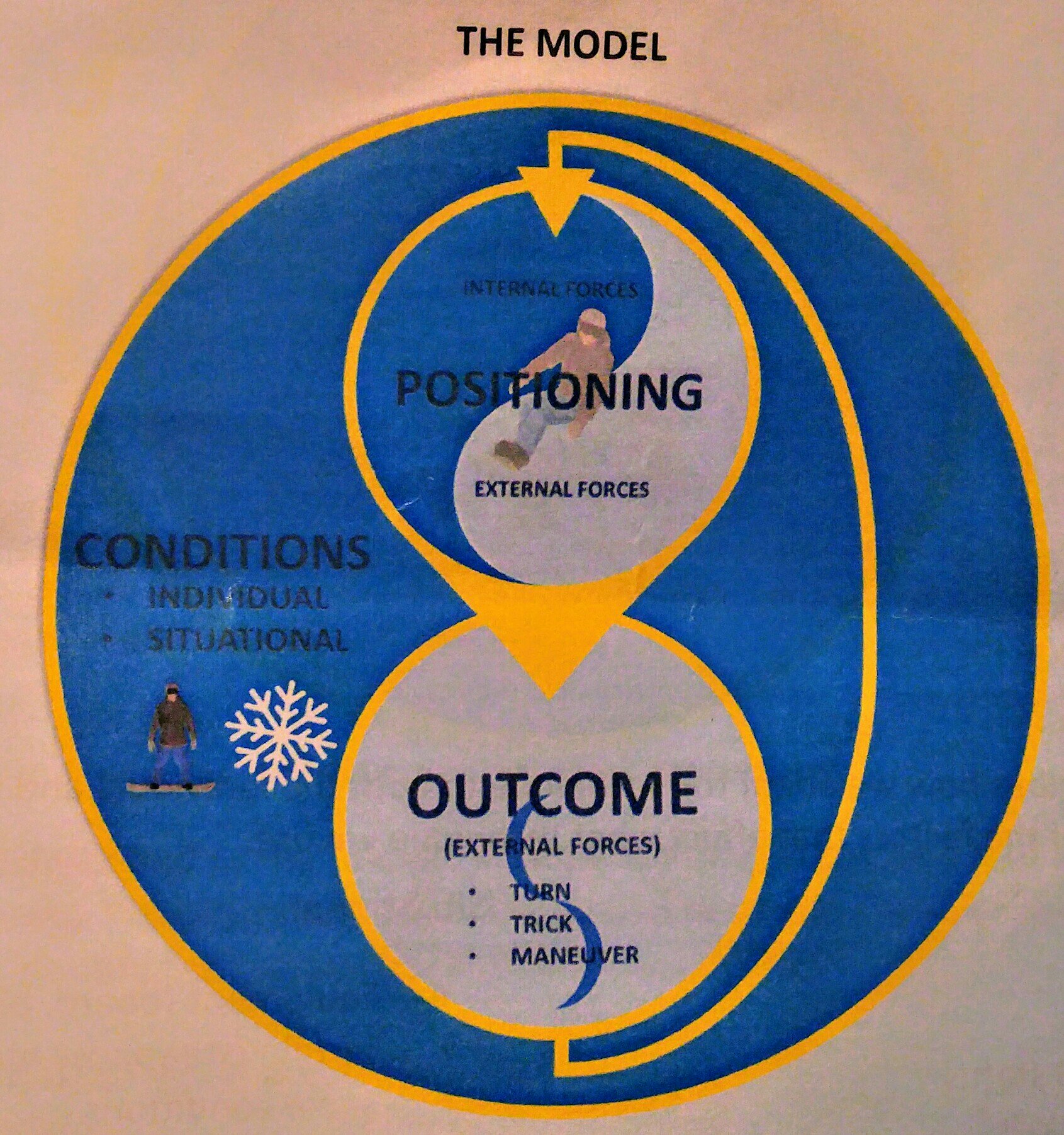
Starting with Conditions, instructors are encouraged to find out a bit about their students and to look at the conditions of the day in order to form the basis of the technique that will be appropriate given those factors. Instructors look at Physical and Psychological factors of the student along with Situational factors such as equipment, terrain, snow conditions etc.
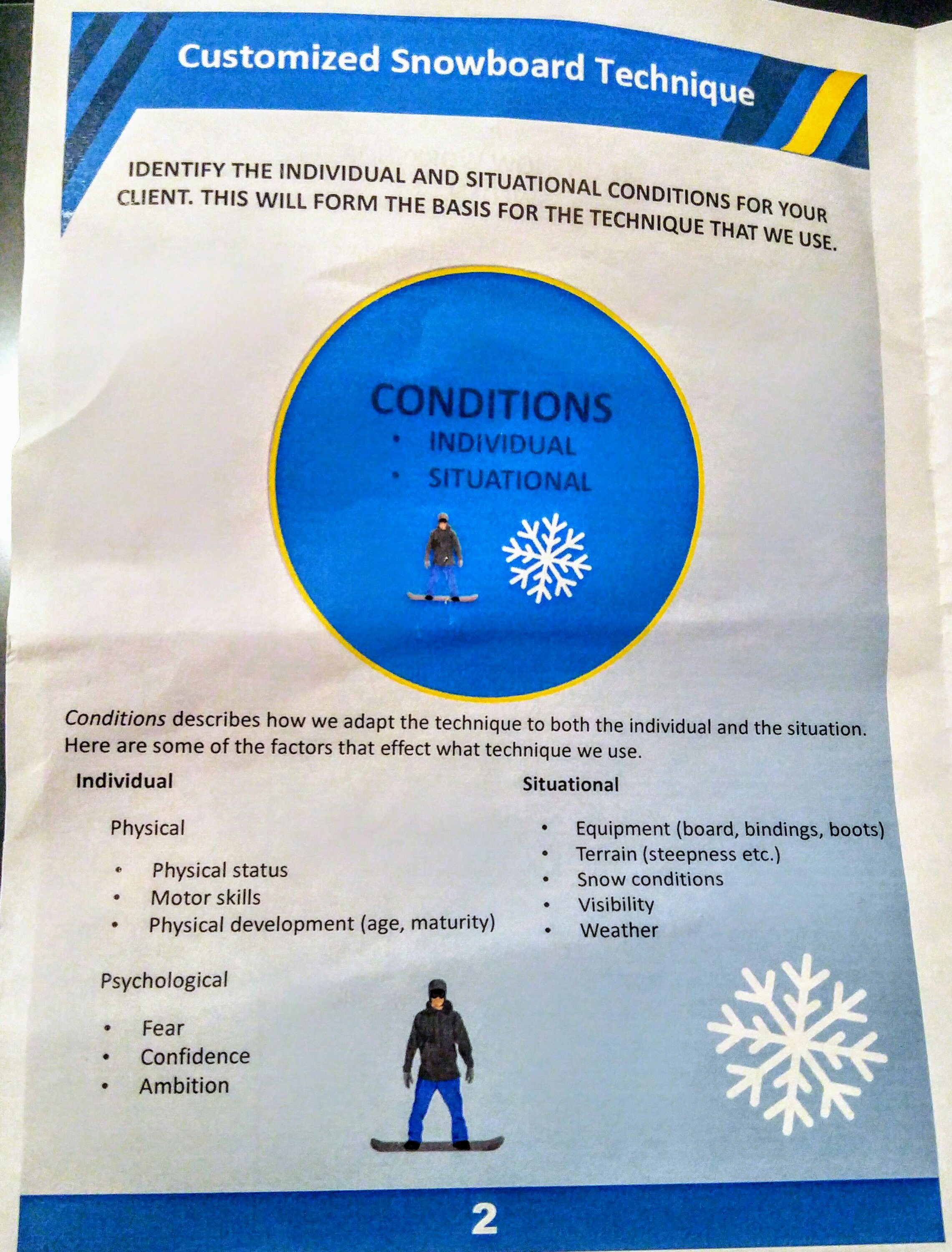
The next step is to identify the desired Outcome or “result” that you will be aiming for. Outcomes can be a certain type of turn, a trick, or a specific maneuver.
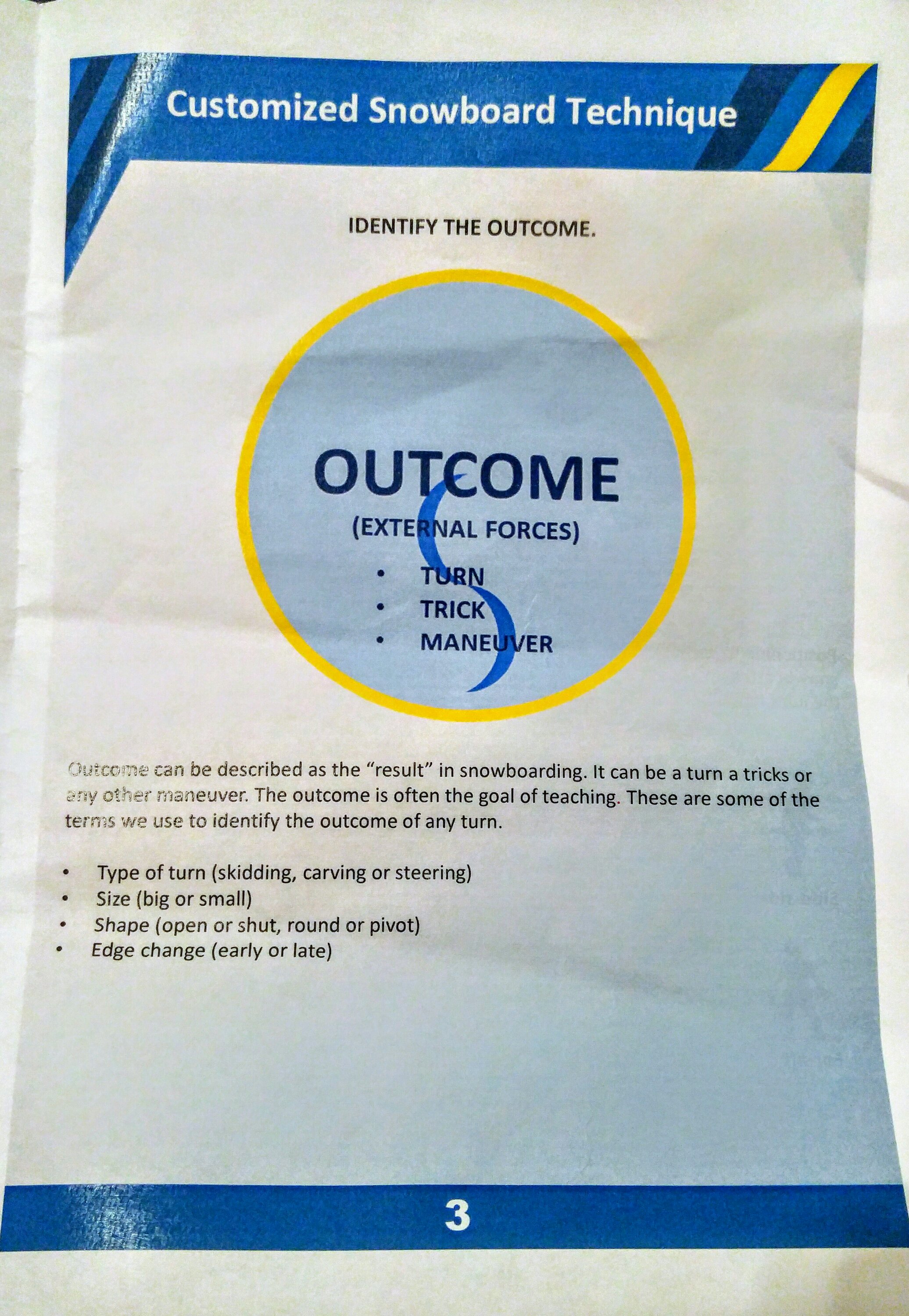
Once the instructor has analysed the Conditions and decided (in conjunction with the student) on a desired Outcome it is now time to identify the Positioning required to achieve the Outcome. Their Positioning is similar to our Skills, or as they describe it “how we regulate the relationship between centre of mass, the snowboard, and the resulting forces from the snow”.
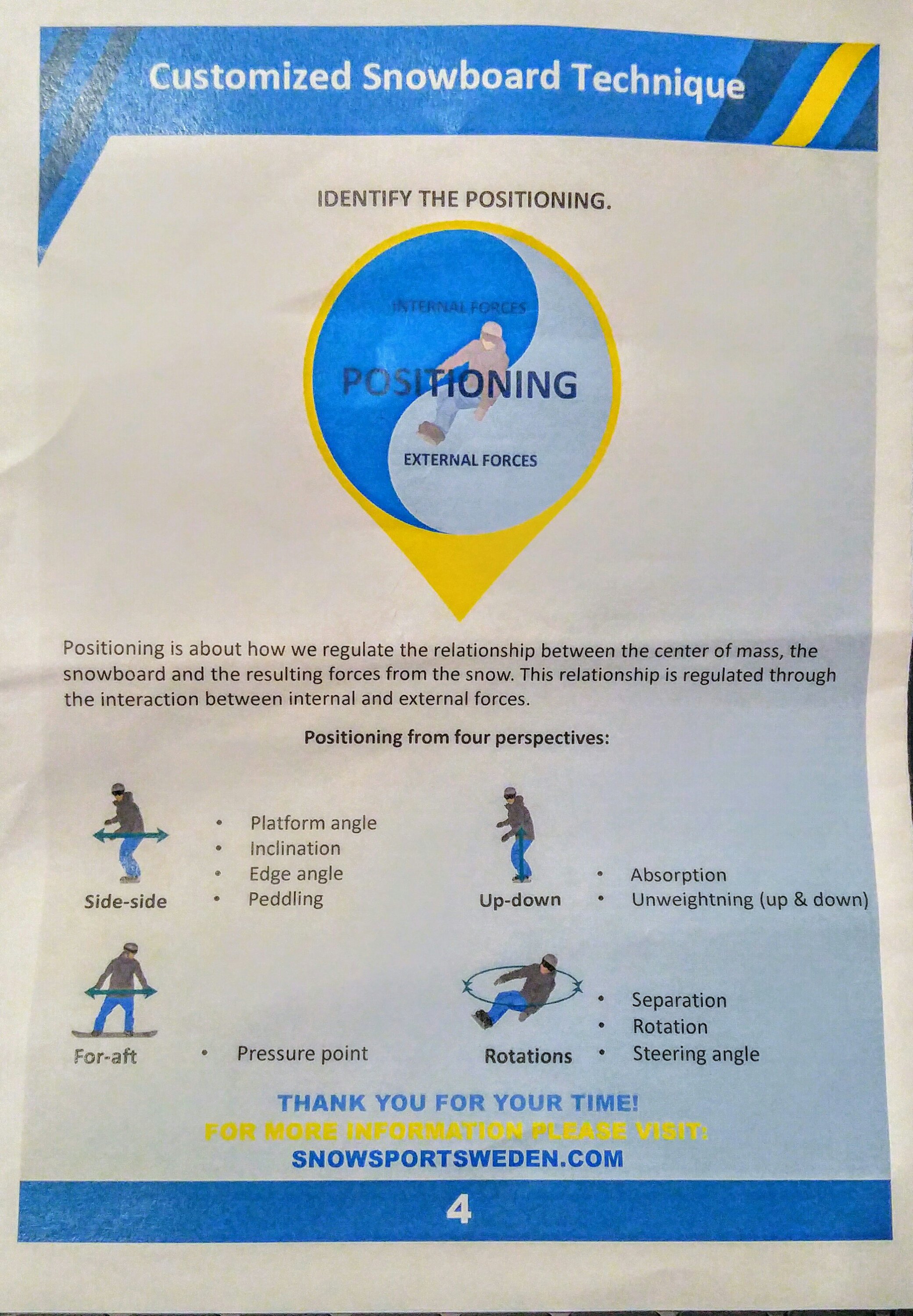
The over arching message was that we shouldn’t jump to techinal (Positioning) without first assessing the Conditions (student and environmental factors) and establishing the desired Outcome.
While the Swedish terminology and methodology might differ from ours this is a message that we could all do to remember when building our lessons.
Slovenia: Vary teaching strategies to help students and instructors
The Slovenia team based their work shop around a survey.
The team asked close to 100 snowboard instructors why they teach snowboarding. The most common answers were;
Fun
Outside
Exercise
Money
Responsibility
Lifestyle
Next they asked 100 snowboard students the same questions. What do you like most about snowboarding? Top answers were;
Fun
Family
Friends
Nature
Exercise
They then asked snowboard instructors what they did not like about teaching. Common answers were;
Students don’t listen
Students don’t want to learn
The student was spoiled
The student was disrespectful
The Slovenians concluded that;
The common idea of snowboarding is to be outside having fun getting exercise.
Why then were instructors having a hard time teaching? If the instructor is not having fun then the student may not be having fun.
The Slovenia decided that their must be a problem in the way the material is being delivered to the student.
After observing their instructors they realized their was a problem in delivery.
Instructors were teaching lessons which had a strong focus on developing skills. For instance, young children were being taught how to control their speed on a slope. The instructors were choosing outcomes that they themselves thought were appropriate without consulting the student. The students were getting frustrated and would disengage in the lesson.
Often a young student is not interested in controlling their speed, they are interested in going fast.
Instructors need to understand how to cater their lesson to the student. They need a wide range of ideas and progressions to put together a great lesson for any student.
If a young student does not want to side slip, do not make them. Figure out what the student would like to do and move forward on that outcome.
Many children like to make small jumps and practice jumping. If this is the case the instructor must figure out a way to make this happen in a safe and suitable area.
If the student is happy then the instructor will be happy.
This is an idea that seems to be well none. I think it is a very important message however. Too often we get stuck in our basic progressions. Sometimes we need to step outside our go-tool box and get creative to keep children engaged.

